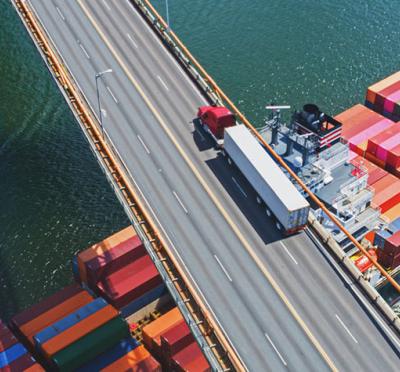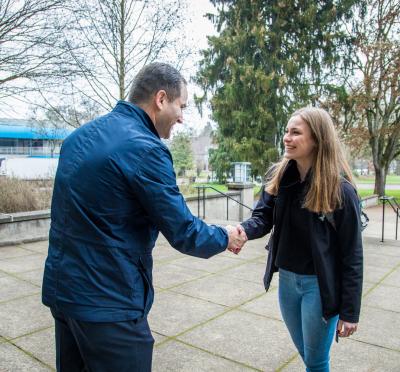
The 6.7 temblor that struck Northridge, Calif., 20 years ago caused an estimated $20 billion in damages during 20 seconds of shaking. Although it was a strong quake, the world has seen much worse, and it was a wakeup call to civil engineers. Collapsed overpasses and pancaked buildings stood as mute, deadly testimony to the fact that the modern construction techniques used at the time were no match for the forces of nature.
"The Northridge earthquake was particularly important," said Armin Stuedlein, assistant professor at Oregon State University’s School of Civil and Construction Engineering. "It began to open our eyes to the possible effects of design flaws."
Stuedlein, Professor David Trejo, and Assistant Professor Jason Ideker are working in their separate specialties to advance civil engineering to ensure that 21st-century bridges and buildings have the resilience to last well into the 22nd century. They are researching new construction techniques and more resilient building materials that will reduce the risk of future bridge and building failures.
In simplest terms, Stuedlein is researching bridge supports below the ground, Trejo is focused on the reinforcing steel inside columns and beams above ground, and Ideker is working to develop durable, crack-resistent concrete for bridge decking — the roadway itself.
The right foundation
The disastrous 9.0 quake and tsunami that struck the northern coast of Japan in 2011 added a sense of urgency to Stuedlein’s and Trejo’s research projects. The coast of Oregon and Washington are due for a similar disaster.
"There is a roughly 40 percent chance that we will have an extremely significant earthquake like Japan within the next 50 years," Stuedlein said. "It will have a magnitude of 8.5 to 9.0. The Northridge quake lasted only 10 to 20 seconds. Ours will last for three to five minutes. There will be many cycles of horizontal loading. I want to understand how the horizontal forces are transferred to the subsurface."
During severe earthquakes, even bridges that don’t break apart can fail if they lose their bearing. To develop stronger, more resilient foundations. Stuedlein and his research team will be constructing four test shafts, three feet wide and 60 feet deep, on campus property just west of the O.H. Hinsdale Wave Research Laboratory. Into those holes, Stuedlein and his team will drop steel reinforcing cages, some made with typical steel and some made with high-strength steel. They will then pour in concrete, creating the equivalent of a bridge support that can withstand a lateral loading of 300,000 pounds (the weight of about 125 cars).
The resilience and stabilizing effect of the drill casing — the metal cylinder that lines the shaft to prevent the walls from collapsing during drilling — is often ignored, so Stuedlein’s team will be paying particular attention to that aspect of the project.
"The casing can be an effective way to transfer lateral loads into soils that are stronger at depth. If leaving the casing means we can reduce the amount of reinforcing steel used, that would be very cost effective, and would reduce the potential for defects associated with concreting difficulties," he said. "That’s where my research connects with David Trejo’s work."
The right materials
Concrete and steel form an excellent construction partnership because they have complementary strengths. Concrete is strong and resists compression, but it crumbles when flexed. Steel is much more flexible, so reinforcing concrete with steel bars combines the strengths of both. However, in many cases there is so much reinforcing steel in bridge supports that it becomes difficult to place the reinforcing bars. If the concrete fails to flow around the steel bars, air pockets can form and weaken the structure.
Trejo advocates using high-strength steel because it would require less to do the same job and leave more space for the concrete to flow.
"The reason high-strength steels are not used already is because we don’t understand them well," Trejo explained. "We don’t understand how they perform in concrete. Our research, and Professor Stuedlein’s research, is assessing whether high-strength steels can and should be used in bridge structures." Early results are promising.
For now: rapid repair
Ideker is concerned with the daily strains of expansion and contraction that continually cause cracks in bridge decking. These cracks allow air, water, and road salt to invade the concrete and weaken it. His research characterizes early-age volume changes in rapid-repair materials, which has enabled civil and construction engineers to ensure the long-term durability of those materials.
"When a catastrophic event occurs, rapid-repair materials can be used to get critical infrastructure back into service again," he said.



